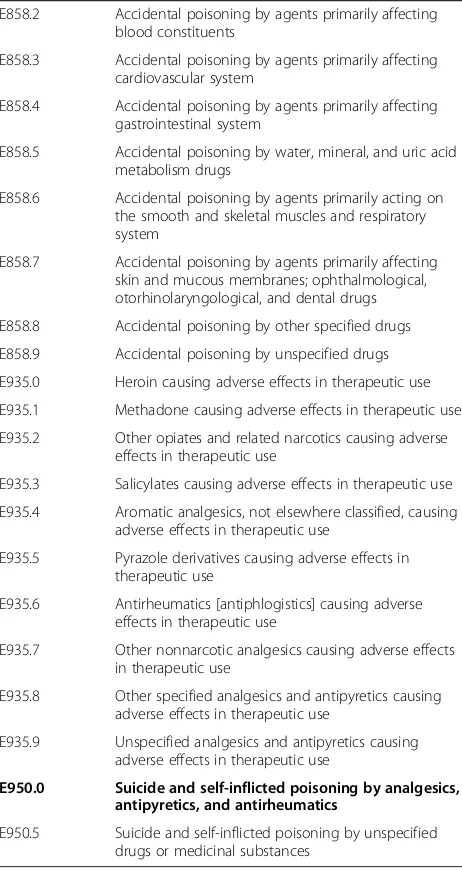Validation of ICD 9 CM codes for identification of acetaminophen related emergency department visits in a large pediatric hospital
Full text
Figure




Related documents
To meet the challenge, a subgroup was established in 1998 to prepare a request for tender concerning design, operation and maintenance of a web-based information service for
aql® and MDS have partnered to provide a plug ‘n’ play convergent Telco solution. aql® Martin Dawes
In this follow-on test, modifications to the wind tunnel model were made based on observations made during the first entry and included removing the cylindrical tripping
Head to Holyrood park and walk to Arthur’s Seat where you can experience some spectacular views of Edinburgh and Fife. Discover
The following ICD-9 diagnostic codes can be used to identify cases of nonfatal opioid poisoning: 965.0: Poisoning by opiates and related narcotics.. 965.00: Poisoning by
The second section provides the definitions and guidelines for using the 2013 CDT codes, as well as the ICD-9-CM codes that most commonly support medical necessity of the service,
are tools to assist users with the conversion of large ICD-9 CM (or SNOMED or other) databases to ICD-10 CM / PCS!. “find” and “replace” codes or lists of codes in
These groups were further condensed in accordance with the Healthy Beverage Index (HBI) guidelines [ 31 ] into the following eight groups: Water, Unsweetened Coffee and Tea,